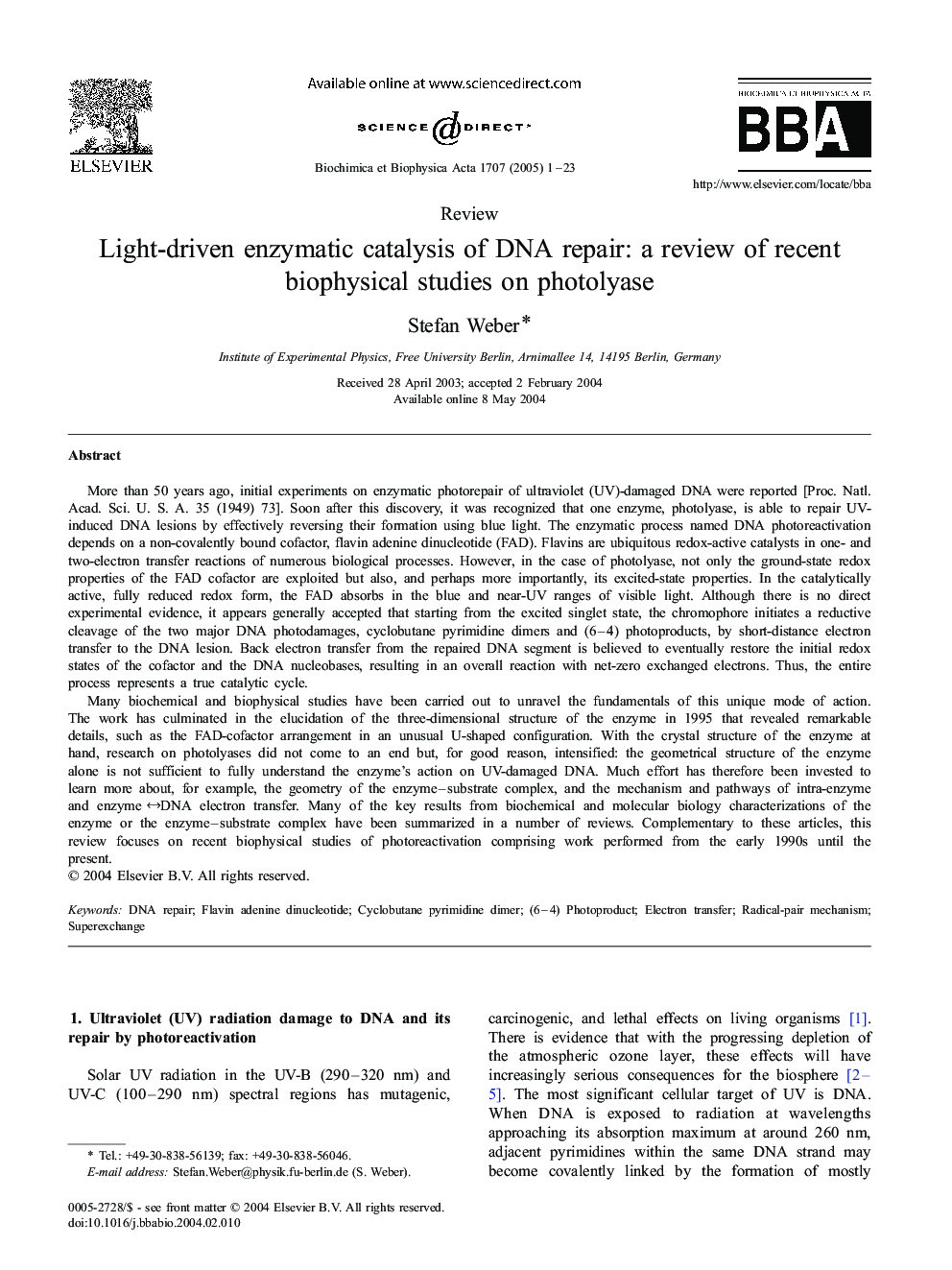| Article ID | Journal | Published Year | Pages | File Type |
|---|---|---|---|---|
| 10796162 | Biochimica et Biophysica Acta (BBA) - Bioenergetics | 2005 | 23 Pages |
Abstract
Many biochemical and biophysical studies have been carried out to unravel the fundamentals of this unique mode of action. The work has culminated in the elucidation of the three-dimensional structure of the enzyme in 1995 that revealed remarkable details, such as the FAD-cofactor arrangement in an unusual U-shaped configuration. With the crystal structure of the enzyme at hand, research on photolyases did not come to an end but, for good reason, intensified: the geometrical structure of the enzyme alone is not sufficient to fully understand the enzyme's action on UV-damaged DNA. Much effort has therefore been invested to learn more about, for example, the geometry of the enzyme-substrate complex, and the mechanism and pathways of intra-enzyme and enzyme âDNA electron transfer. Many of the key results from biochemical and molecular biology characterizations of the enzyme or the enzyme-substrate complex have been summarized in a number of reviews. Complementary to these articles, this review focuses on recent biophysical studies of photoreactivation comprising work performed from the early 1990s until the present.
Keywords
Related Topics
Life Sciences
Agricultural and Biological Sciences
Plant Science
Authors
Stefan Weber,
